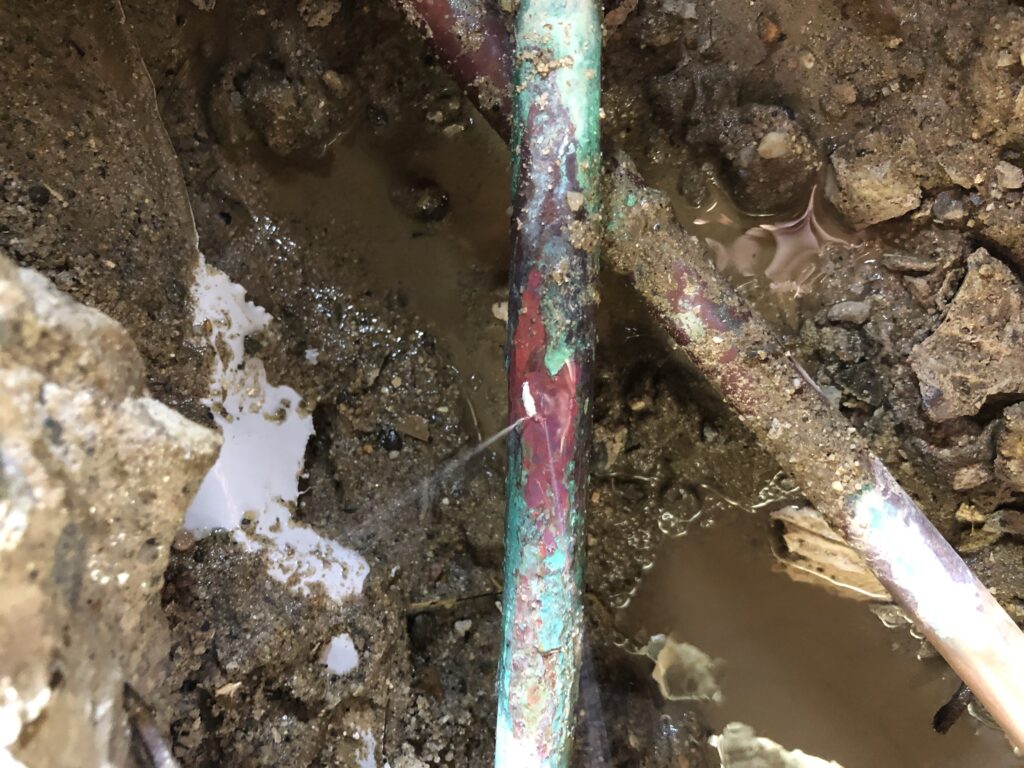DIY Testing for leaks
If you suspect that you have a water leak of some sort, there are a few tests that you can DIY testing for leaks.
A water meter test can be used to determine if you have a leak at your home. For this test, you need to validate that you don’t have any water running in your home. So make sure no toilets are on, no one is in the shower, no faucets on, dishwasher, washing machine and any other water consumption appliances are all off. Then, examine your water meter.
Water meters are normally located towards the front of your property close to the street past the sidewalk. If there is no sidewalk it will most likely be at the edge of your property. Lift the plate covering the water meter and examine the meter itself (some meters have lids that need to be flipped over to be viewed).
Each water meter is made up of three basic components, a large dial showing water movement, a small dial showing water movement, and an analog counter. The small dial is called a low flow indicator and shows exactly that. The low flow indicator can be a number of shapes but most commonly a triangle, circle, teardrop, or snowflake shaped with a clear point, arrow, or indication line.
They also come in a variety of colors but most commonly red, black, and blue. Even the smallest amount of water movement through that valve will cause your low flow indicator to start to spin.
When examining your low flow indicator, if you notice no visible movement within just a few minutes, you can safely assume that you currently do not have a water leak. It is always a good idea to test that the low flow indicator does indeed work.
You can do this by cracking your hose bib so a little bit of water starts coming out. Now when you examine your low flow indicator, you should clearly see movement. This will validate that your water meter is in proper working condition and will validate your previous findings. Please read Pressure testing for more DIY testing for leaks.
Pressure Testing
To conduct a pressure test at your home, attach a water pressure gauge to hose bib then open the hose bib. You will now see the needle on the pressure gauge jump to the current pressure your house is running on. Now shut off the water to your house by turning off the water supply valve.
Return to your pressure gauge, and if it ends up losing pressure, you might have a water leak, as the pressure is escaping from somewhere. If your pressure gauge does not lose pressure, this is a good indication that you do not have a leak.
You can validate your pressure gauge is working correctly by going inside your home and turning on a faucet. Now return to your pressure gauge to validate that the pressure has dropped. If the pressure doesn’t drop, you have attached your pressure gauge to an isolated line not connected to your house’s main water supply.
Pegasus Leak Detection is a family owned and operated company. Our company is highly rated in the leak detection world. Our technicians are specially trained. Contact us today.

